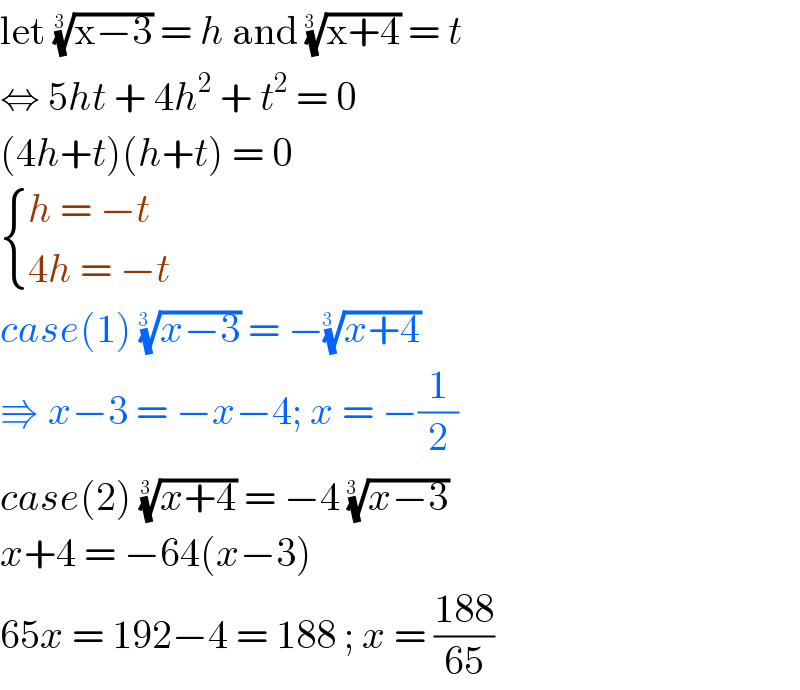Question Number 101489 by bramlex last updated on 03/Jul/20

Answered by john santu last updated on 03/Jul/20

$$\mathrm{let}\:\sqrt[{\mathrm{3}\:}]{\mathrm{x}−\mathrm{3}}\:=\:{h}\:\mathrm{and}\:\sqrt[{\mathrm{3}\:\:}]{\mathrm{x}+\mathrm{4}}\:=\:{t} \\ $$$$\Leftrightarrow\:\mathrm{5}{ht}\:+\:\mathrm{4}{h}^{\mathrm{2}} \:+\:{t}^{\mathrm{2}} \:=\:\mathrm{0} \\ $$$$\left(\mathrm{4}{h}+{t}\right)\left({h}+{t}\right)\:=\:\mathrm{0} \\ $$$$\begin{cases}{{h}\:=\:−{t}}\\{\mathrm{4}{h}\:=\:−{t}}\end{cases} \\ $$$${case}\left(\mathrm{1}\right)\:\sqrt[{\mathrm{3}\:\:}]{{x}−\mathrm{3}}\:=\:−\sqrt[{\mathrm{3}\:\:}]{{x}+\mathrm{4}} \\ $$$$\Rrightarrow\:{x}−\mathrm{3}\:=\:−{x}−\mathrm{4};\:{x}\:=\:−\frac{\mathrm{1}}{\mathrm{2}} \\ $$$${case}\left(\mathrm{2}\right)\:\sqrt[{\mathrm{3}\:}]{{x}+\mathrm{4}}\:=\:−\mathrm{4}\:\sqrt[{\mathrm{3}\:\:}]{{x}−\mathrm{3}} \\ $$$${x}+\mathrm{4}\:=\:−\mathrm{64}\left({x}−\mathrm{3}\right) \\ $$$$\mathrm{65}{x}\:=\:\mathrm{192}−\mathrm{4}\:=\:\mathrm{188}\:;\:{x}\:=\:\frac{\mathrm{188}}{\mathrm{65}}\: \\ $$
